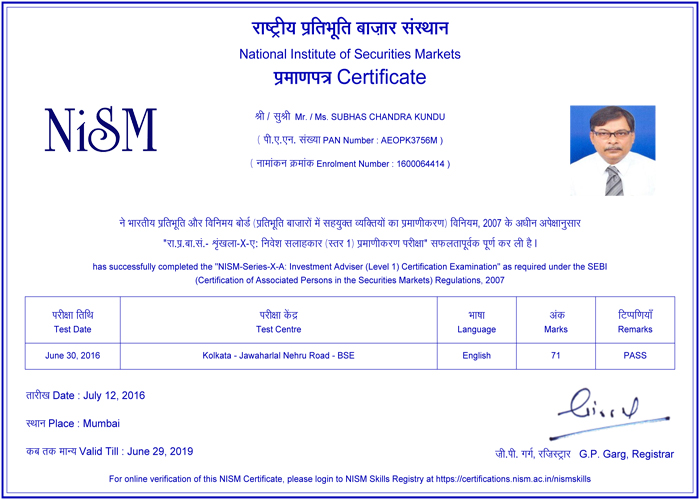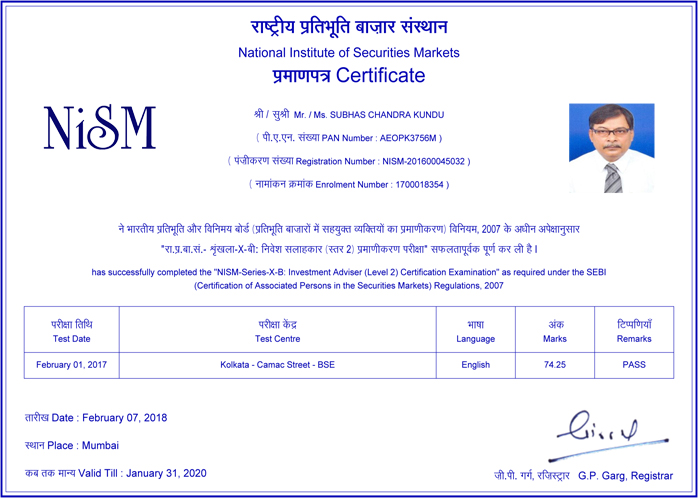
Securitization – A sophisticated sharpener
The canvas of Indian Financial system in general and Indian Banking system in particular has undergone a tremendous transformation with the introduction of wide range of economic reforms since 1991. There has been a paradigm shift in concept, precept and outlook. ‘Innovate or perish’ is the new mantra today. We, the people of India, have witnessed various path breaking sophisticated innovation in the financial market viz. financial derivates, future, option, hedging, custodial services, securitization etc.
Securitization has emerged as a new buzzword in the Indian as well as international financial arena. It has assumed a considerable importance in the world of financial sector due to increasing influence of market forces on a global scale.
Genesis :-
The concept of ‘Securitization’ first originated in the USA. In 1970, the Government National Mortgage Association (GNMA) first bought mortgages from mortgage companies and converted them into securities. In Europe, securitization is gaining its popularity day by day. Now United Kingdom is the largest securitization market in Europe. Apart from this, Securitization is increasing in Germany, Italy, Denmanrk and other developed countries.
In India, this concept is still in its infancy stage. In 1992, Citi Bank first originated auto loan securitization in India. Now the securitization market in India is gradually expanding though in a slow but steady basis.
Need of Securitization :-
Every system is developed on the basis of human needs. Securitization is not the exception to the rule. When Bank or financial institutions give term loans, they keep these loans in their books till liquidation. This practice has two disadvantages
(a) It keeps an adequate pressure on capital adequacy ratio.
(b) It may create Asset-liability management problem. Securitization is a device to overcome these difficulties.
Meaning of Securitization:-
The process of conversion of illiquid loans into tradable securities is called securitization. In other words, receivables which are considered to be of higher quality are pooled together and sold to an intermediary (Special purpose vehicle) who in turn issues securities backed by the receivables to the prospective investors with the provision that the inflow of cash in the shape of recoveries will be distributed prorata to the coupon holders. Parties involved in the securitization process :-
Various parties are involved in a securitization process. It is not possible for a single party in any transaction to perform multiple roles. A securitization transaction would involve the following parties E : Book India \ 2018\ F\Adhya-1 2nd proof 11.6.18 [20]
(a) Primary parties :-
(i) Originator: – The institution who originates the deal i.e lending institution is called originator. In other Words, the originator is one who transfer receivables to the issuing entity i.e special purpose vehicle (SPV).
(ii) Special purpose vehicle (SPV)/Trust :- The SPV or a trust acts as a linkman between originator and Investor. It is an intermediary who holds the receivables and issues the securities which investors subscribe to. Generally Banks or special formed companies perform this role.
(iii) Investors :- Investors are the purchaser of securities. It may be pension fund, Insurance funds, High net worth individuals.
(b) Supportive parties :-
(i) Seller :- Usually the originator and seller are the same. Sometimes the originator sells their loans to other companies in order to securitize them.
(ii) Obligator/Borrower :- The persons who have taken loan from the originator.
(iii) Servicer :- The servicer collects the instalment due from borrower and makes payment to investors. They also furnish information to the Rating Agency and SPV in lieu of fee. Generally the originator acts as servicer.
(iv) Rating Agencies :- The Rating agencies assign a credit rating to the instrument issued alter assessing the risk involved in the process. Apart from these, other parties are Arrangers Credit Enhancer, Legal Advisor, Banker etc. Different types of Securities
There is no uniform type of securities issued by SPV. Different types of securities are –
(i) Pass through certificate/Benefical interest certificate – The securities which represent a direct claim of the investors on all the SPV collected receivables is called pan through certificate or Beneficial interest certificate.
(ii) Pay through certificates :- It is in the nature of equity-investment. Here SPV holds cash inflow from the receivables for the purpose of re-investment and payments are made at specific interval i.e. on fixed date. In this case, the securities held by the investors are called pay through certificate.
(iii) Asset backed obligation/bonds/Notes :- The securities are the obligation of the SPV which are discharged by the receivables from the assets transferred to it. The obligation could be referred as Assets backed obligation/Bonds/Notes.
(iv) Senior Notes/Junior Notes/Mezzanine Notes/Bonds – The securities issued by the SPV could also be named as the basis or risk or other features such as Senior Notes/Junior Notes etc.
(v) Asset Backed Commercial paper/Term paper – It is named on the terms of the paper concerned. If the paper is short term commercial paper, it is referred to as asset backed commercial paper otherwise referred to as term paper.
Modus operandi of securitization
Step – I
After detail evaluation of assets portfolio, the originator select a number of receivable of highest quality to be assigned.
Step – II
Then the originator sells the selected assets in the special purpose vechicle (SPV) at a discounted value.
Step – III
The SPV issues Securities either backed to the originator who then takes it to the market to the investors either debt type securities or beneficial interest certificates. These are publicly offered or privately placed, as found conducive
Step – IV
The servicer collects the receivables and deposits the same to an escrow account which the SPV operates on the strength of power of Attorney (POA).
Step – V
The SPV either passes the collection to the investors or re-invests the same to pay off to investors at stated interval.
Step – VI
In case of any default, the servicer has the right to take action against the debtors as the SPV agent.
Step-VII
When only a meagre outstanding receivables are left to be collected, the origination by back the same. This is called ‘Clean up call’.
Advantages of Securitization:-
The originator or investors both get advantage from the securitization process which are enumerated below.
(i) Originator’s viewpoint :-
(a) It acts as a alternative funding option. Relatively illiquid assets are converted into marketable securities.
(b) It helps to improve, maintain capital adequacy ratio as bulks of assets one off-loaded from the Balance Sheet.
E : Book India \ 2018\ F\Adhya-1 1st proof [21]
(c) No reserve is required to maintain in the form of CRR/SLR.
(d) The cost of fund is comparatively lower.
(e) It helps to eliminate maturity risk and interest rate by matching its market funding to the cash flows from the underlying assets.
(ii) Investor’s view point :-
(a) The instrument is backed by assured cash flow and secured through adequate credit enhancement.
(b) There is no limitation as to the maturity period as it could range from one week to 5 years. Hence instrument could be issued with different maturities. As a result the inventors get opportunity of wide range of choice.
(c) Investors risk is minimised.
Limitation of Securitization:-
(a) It is expected that aggregate cost of securitization assets is comparatively lower than the cost of mainstream funding. But, emerging market securitization has been shown to be a costly source.
(b) It is uneconomical for lower requirement due to huge upfront costs in the form of Rating fee, stamp duty etc.
(c) One of the most important limitation of securitization is that the entire data is passed to the SPV which may create trouble to the originator in long run.
(d) Only good quality assets come under the preview of securitization. It is called “Cherry picking”. As a result the originator may suffer in future.
Conclusion :-
The financial experts expect that securitization will be able to change the face Indian Banking System. They think that term lending can be replaced by Securitized lending in near future. Reference :- (i) Study Material prepared by CRISIL
(ii) Securitization – Mr. Vinode Kothari
(iii) Tit bits of General Advance and Financial Service – Mr. S.K.Das
(iv) Bank quest – Various issues.
(v) IBA – Bellentin – Various issues










